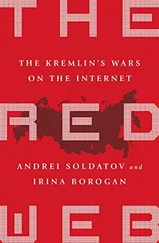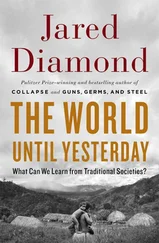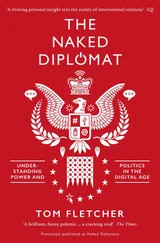Jared Cohen - The New Digital Age
Здесь есть возможность читать онлайн «Jared Cohen - The New Digital Age» весь текст электронной книги совершенно бесплатно (целиком полную версию без сокращений). В некоторых случаях можно слушать аудио, скачать через торрент в формате fb2 и присутствует краткое содержание. Жанр: Старинная литература, на английском языке. Описание произведения, (предисловие) а так же отзывы посетителей доступны на портале библиотеки ЛибКат.
- Название:The New Digital Age
- Автор:
- Жанр:
- Год:неизвестен
- ISBN:нет данных
- Рейтинг книги:5 / 5. Голосов: 1
-
Избранное:Добавить в избранное
- Отзывы:
-
Ваша оценка:
- 100
- 1
- 2
- 3
- 4
- 5
The New Digital Age: краткое содержание, описание и аннотация
Предлагаем к чтению аннотацию, описание, краткое содержание или предисловие (зависит от того, что написал сам автор книги «The New Digital Age»). Если вы не нашли необходимую информацию о книге — напишите в комментариях, мы постараемся отыскать её.
The New Digital Age — читать онлайн бесплатно полную книгу (весь текст) целиком
Ниже представлен текст книги, разбитый по страницам. Система сохранения места последней прочитанной страницы, позволяет с удобством читать онлайн бесплатно книгу «The New Digital Age», без необходимости каждый раз заново искать на чём Вы остановились. Поставьте закладку, и сможете в любой момент перейти на страницу, на которой закончили чтение.
Интервал:
Закладка:
Technology companies, NGOs and individuals will also participate in these coalitions, each bringing something uniquely valuable to the table. Companies can build open-source software tailored to the needs of the people inside a country, and offer free upgrades for all of their products. NGOs can coordinate with telecoms to build accurate databases of a given population and its needs, mapping out where the most unstable or isolated pockets are. And citizens can volunteer to test the new network and all of these products, helping to find bugs and vulnerabilities as well as providing crucial user feedback.
No matter how advanced our technology becomes, conflict and war will always find their roots in the physical world, where the decisions to deploy machines and cyber tactics are fundamentally human. As an equal-opportunity enabler, technology will enhance the abilities of all participants in a conflict to do more, which means more messaging and content from all sides, greater use of robots and cyber weapons, and a wider range of strategic targets to strike. There are some distinct improvements, like the accountability driven by the permanence of evidence, but ultimately technology will complicate conflict even as it reduces risk on a net level.
Future combatants—states, rebels, militaries—will find that the tough ethical, tactical and strategic calculations they are used to making in physical conflicts will need to account for a virtual front that will oftentimes affect their decision-making. This will lead aggressors to take more actions in the less risky virtual front, as we described earlier, with online discrimination and hard-to-attribute cyber first-strike invasions. In other instances, the virtual front will act as a constraining force, leading aggressors to second-guess the degree of their aggression on the physical front. And as we will see even more clearly in the following pages, the mere existence of a virtual front paves the way for intervention options that are still robust, but minimize or reduce altogether the need to send troops into harm’s way. Drone-patrolled no-fly zones and robotic peacekeeping interventions may be possible during a conflict, but such steps are limited. When the conflict is over, however, and the reconstruction effort begins, the opportunities for technology to help rebuild the country are endless.
1If such an exception was made for the Israeli ultra-Orthodox on religious grounds, what kind of precedent would it set? What if the ultraconservative Salafis in Egypt followed suit, demanding a special white-listed Internet?
2In policy circles, this is known as the CNN Effect, and is most frequently associated with the 1992–1993 U.S. intervention in Somalia. It’s widely believed that the images broadcast on television of starving and desperate Somalis prompted George H. W. Bush to send in military forces, but when, on October 3, 1993, eighteen Army Rangers and two Malaysian coalition partners were killed and the images of one of the Americans dragged through the streets in Mogadishu reached the airwaves, the American forces were withdrawn.
3There is a start-up today called Storyful that does this for many of the major news broadcasters. It employs former journalists and carefully curates content from social media (e.g., by verifying that the weather in a YouTube video matches the weather recorded in that city on the day the video was supposedly shot).
4Computer enthusiasts will remember this agency’s central role in creating the Internet, back when the agency was known as Advanced Research Projects Agency (ARPA).
5Two PackBots were deployed during the Fukushima nuclear crisis following the 2011 earthquake in Japan, entering the damaged plant, where high radiation levels made it dangerous for human rescue workers, to gather visual and sensory data.
6Singer’s statement was corroborated by several active-duty Special Forces soldiers we spoke to.
CHAPTER 7
The Future of
Reconstruction
It’s now eminently clear how technology can be used to turn societies upside down and even tear them apart, but what about putting them back together? Reconstruction after a conflict or a natural disaster is a long and arduous process, hardly something a flash mob or viral video campaign can carry out. But while communication technologies alone can’t rebuild broken societies, political, economic and security efforts can all be enhanced and accelerated because of technology. Tools that we use for casual entertainment today will find new purpose in the future in postcrisis countries, and populations in need will find more information and more power at their fingertips. Reconstruction efforts will become more innovative, more inclusive and more efficient over time, as old models and methods are either updated or discarded. Technology cannot thwart disaster or halt a civil war, but it can make the process of putting the pieces back together less painful.
Just as future conflicts will see the addition of a virtual front, so too will reconstruction efforts. We will still see cranes and bulldozers restoring roads, rebuilding bridges and resurrecting destroyed buildings, but we will also see an immediate and simultaneous focus on key functions that in the past have often come later in the process. Getting communications up and running, for example, will enable the rebuilding of the physical infrastructure and the economic and governance infrastructure at the same time. Here we will outline how we envision the approach future reconstruction planners will take to a postcrisis society, discuss the wave of new participants that connectivity will spur to action and offer a few ideas for innovative policies that can put societies on a faster path toward recovery.
Communications First
For societies emerging from a man-made or natural disaster, reconstruction is a daunting task. From rebuilding roads and buildings to reconnecting the population to the services it needs, these challenges require immense resources, different types of technical expertise and, of course, patience. Modern technology can aid these processes significantly if employed in the right ways, and we believe that successful reconstruction efforts in the future will rely heavily on communication technologies and fast telecommunications networks.
There will be a reconstruction prototype: a flexible and segmentary set of adaptable practices and models that can be tailored to fit particular postcrisis environments. Technology companies use prototypes and “beta” models to allow room for trial and error—the underlying philosophy being that early-stage feedback for an imperfect product ultimately yields a better result in the end. (Hence the tech entrepreneur’s favorite aphorism: Fail early, fail often.) A prototype-like approach to reconstruction efforts will take some time to develop, but ultimately it will better serve the communities in need.
The main component of a reconstruction prototype—and what distinguishes it from, say, more traditional reconstruction efforts—is a communications-first, or mobile-first, mentality. The restoration and upgrading of communication networks have already become the new cement in modern reconstruction efforts. Looking ahead, upgrading broken societies to the fastest and most modern version of telecommunications infrastructure will be the top priority of all reconstruction actors, not least because the success of their own work will depend on it. Even in the last decade we’ve witnessed such a shift.
As recently as the early 2000s, post-conflict reconstruction wasn’t so much about telecommunications revival as it was telecommunications installation. Neither Afghanistan nor Iraq had any semblance of a mobile network prior to regime change. The Taliban government violently opposed almost every form of consumer technology (although it had a small GSM [Global System for Mobile Communications] network limited to government officials) and Saddam Hussein banned mobile phones entirely in his totalitarian state. Once those regimes fell, the populations were left with virtually no infrastructure or modern devices; combatants in the ensuing conflicts were the only ones with some form of portable communications (typically radios).
Читать дальшеИнтервал:
Закладка:
Похожие книги на «The New Digital Age»
Представляем Вашему вниманию похожие книги на «The New Digital Age» списком для выбора. Мы отобрали схожую по названию и смыслу литературу в надежде предоставить читателям больше вариантов отыскать новые, интересные, ещё непрочитанные произведения.
Обсуждение, отзывы о книге «The New Digital Age» и просто собственные мнения читателей. Оставьте ваши комментарии, напишите, что Вы думаете о произведении, его смысле или главных героях. Укажите что конкретно понравилось, а что нет, и почему Вы так считаете.












